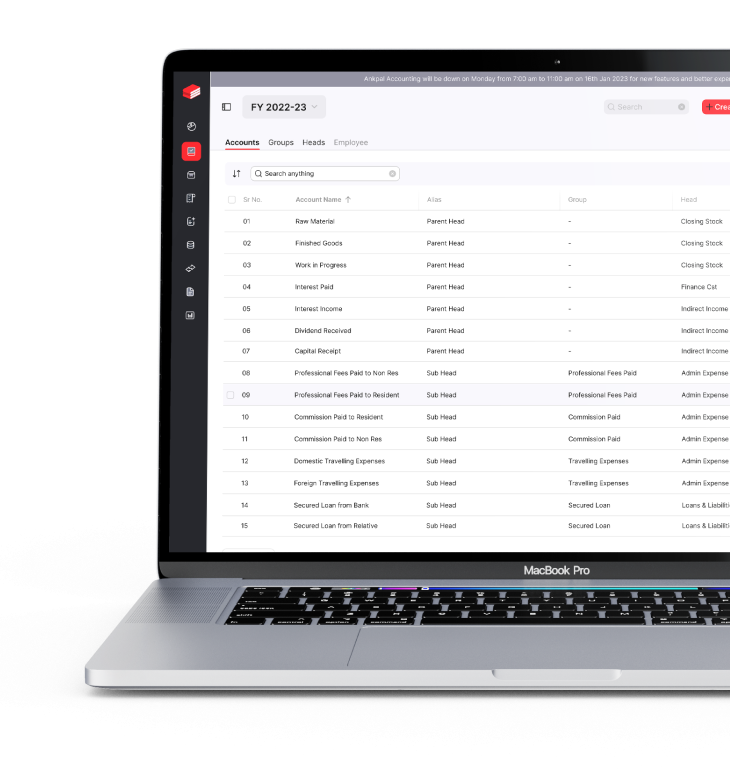
There are certain components of the corporate environment that won't be going away any time soon, including the accounting division, the controller role, and even the CFO. Nonetheless, many CEOs occasionally have disagreements even with the candidates they selected for the job. A list of suggestions has been published to increase the efficiency, productivity, and success-enabling environment in the accounting department. Without a thorough accounting system, companies run the danger of experiencing cash flow problems, internal fraud, tax fines, and even failure. Implementing a strong accounting and bookkeeping system and optimizing it to make it a potent financial engine that will fuel business growth are crucial steps in business transformation.
Ways To Optimize, Develop, And Improve Your Accounting Systems:
1. Time-Saving Features
It will be simpler to reconcile accounts payable and receivable to the balance sheet and financial statements at the end of each month as opposed to all at once after the fiscal year. It would be more chaotic and perplexing to do it every year. This not only controls time but also breaks up loops.
2. Automation To Consider
Solutions using back-office automation technology have been created to address practically all of the difficulties faced by the current accounting and bookkeeping department. To significantly lessen your back office workload and enhance your financial data, technology may optimize, automate, streamline, and integrate as many elements of your company's accounting and bookkeeping procedures through inventory management software as feasible
3. Dedicated Business Accounts
To keep track of costs and profits, businesses should keep their credit cards and bank accounts separate from their accounts. This will simplify tax season and safeguard private property in the event of bankruptcy. Pay attention to how much you'll owe because business checking accounts have greater fees than personal banking.
4. Expense Management
Processes for recording the spending, identifying the purpose, and documenting when it is refunded should be included in a system for controlling employee expenses and paying them back. Two distinct charts of accounts should be prepared to categorize expenses for management reporting and tax filing purposes.
5. Select The Right Accounting Software
The most crucial information in this work is how a core accounting system like QuickBooks may be used in conjunction with clever time and cost tracking, payables, and invoicing software, and professional tax accounting software to change the back office from a compliance and tax machine to a strategic financial hub. With accounting in the cloud, data can be accessed from any location and made available to departments, executives, and other disconnected databases from a single central hub.
6. Data Management
Use cloud accounting to back up your data, and scan paper documents to create digital copies. There are automated solutions like OCR that can retrieve data for you so you can input it into your accounting system. Though it may sound futuristic, this technology is not.
7. Invoice Management
Automatic invoicing is a good approach to cut down on errors and accounting work time. Billing, collections, and cash applications are all automated by programs like Intuit Payment Solutions.
8. Accounts Payable / Receivable Management
Businesses must manage their accounts payable if they want to preserve their reputation and stay clear of late penalties and interest. Businesses must set up processes, rules, and procedures for assessing consumer credit, educating clients on payment expectations, creating invoices, accurately billing clients, documenting payments received, and monitoring past-due accounts in order to achieve this. When a discount is offered for prompt payment, pay your bills on time or early.
9. Sales Tax Reporting
Sales tax-related businesses must stay on top of shifting rates, exemptions, holidays, and sets of regulations that vary between tax jurisdictions. Businesses must set up a proactive plan and professional tax accounting software system for tracking sales taxes in order to assure compliance. The business will determine which technology is appropriate for this type of automation because errors in sales tax might result in severe penalties.
Conclusion
Efficiency can be greatly improved by implementing these 9 adjustments and process enhancements. By saving time and money and giving you the financial data you need to make strategic decisions, accounting automation may also assist you in designing and establishing smart and effective bookkeeping and accounting procedures that work for your company.








